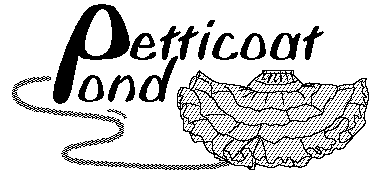

MAGAZINE COVERS, ADS, AND FEATURE ARTICLES
PAGE THIRTY-THREEAll enlargeable on this page
Chiffon:
Echo de la Mode magazine 23 Jun 57 (translation below picture)
TRANSLATION BY MIKEL:
Playing with Materials...on a Model
As you know well, the model of a dress will produce quite different effects according to the material the model is made of. You have seen one example
in a previous ECHO OF FASHION magazine issue which proposed a draped dress made of either crÍpe, jersey, silk or wool.Similarly, the dresses you see in this article are built from the same pattern applied to four different materials, each of them bringing in its own characteristics (namely : nylon,
organdie silk, twill silk and chiffon).We have built three of these dresses using natural silk. The beauty of this material, a very many possibilities it offers were perfect to get the various effects we expected.
In addition, we decided to play on (and increase) the characteristics of each material with differently-shaped petticoats.
• The first dress model is made of nylon the aspect of which is simply charming. Nylon is a light material, rather bouffant; the flounces of the dress are well-proportioned, properly located;they flare evenly from top to bottom.
The nylon petticoat is rather stiff; it is composed of a flat yoke on the hips, well-adjusted by means of darts. This petticoat features a tier with loose-fitted darts set at a lower level than the first (top) flounce of the dress (see the white printed dress).
• The second dress is made of a blue organdie silk, it creates a more bouffant look. Its skirt has a much more flaring structure, as if sustained by a blowing gust of wind.
Matching the dress, an organdy petti is built with a flat adjusted yoke, on which are sewn two tiers with loose-fitted darts. Each tier is assembled at the same levels than the flounces
of the dress (see the blue extra-flared dress).• The third dress is made of printed twill silk. This material is heavier, softer than silk or nylon, offering a steeper, falling look and in another interpretation is sustained by a crÍpe
satin sheath petticoat down to the bottom flounce of the dress. Right at its bottom, the petti is made up of a full stiff nylon tier with loose-fitted darts. That little trick gives the dress
a quite different silhouette (see the printed yellow dress).• Another model dress: made of grey chiffon used in double layers; this material is still softer than twill. Extremely fluid in its texture, the chiffon must fall naturally all along your body.
It is worn upon a grey satin sheath, very close to your body (see the blue dress, bottom right).To end it up, when you plan making a dress or a gown, test different materials, weigh their texture, try them on, before making a decision. Then, comparing them to the pattern you
have selected, figure out (with the welcome help of a nearby shop attendant) which material will provide you with the best expected outcome.The materials here described are from the Rodin Company
Cover of a (magazine?) series
From Nancy N.
advertisement strip out
Optimized and submitted by Sylvia Marie
Return to Main PettiPictures Page